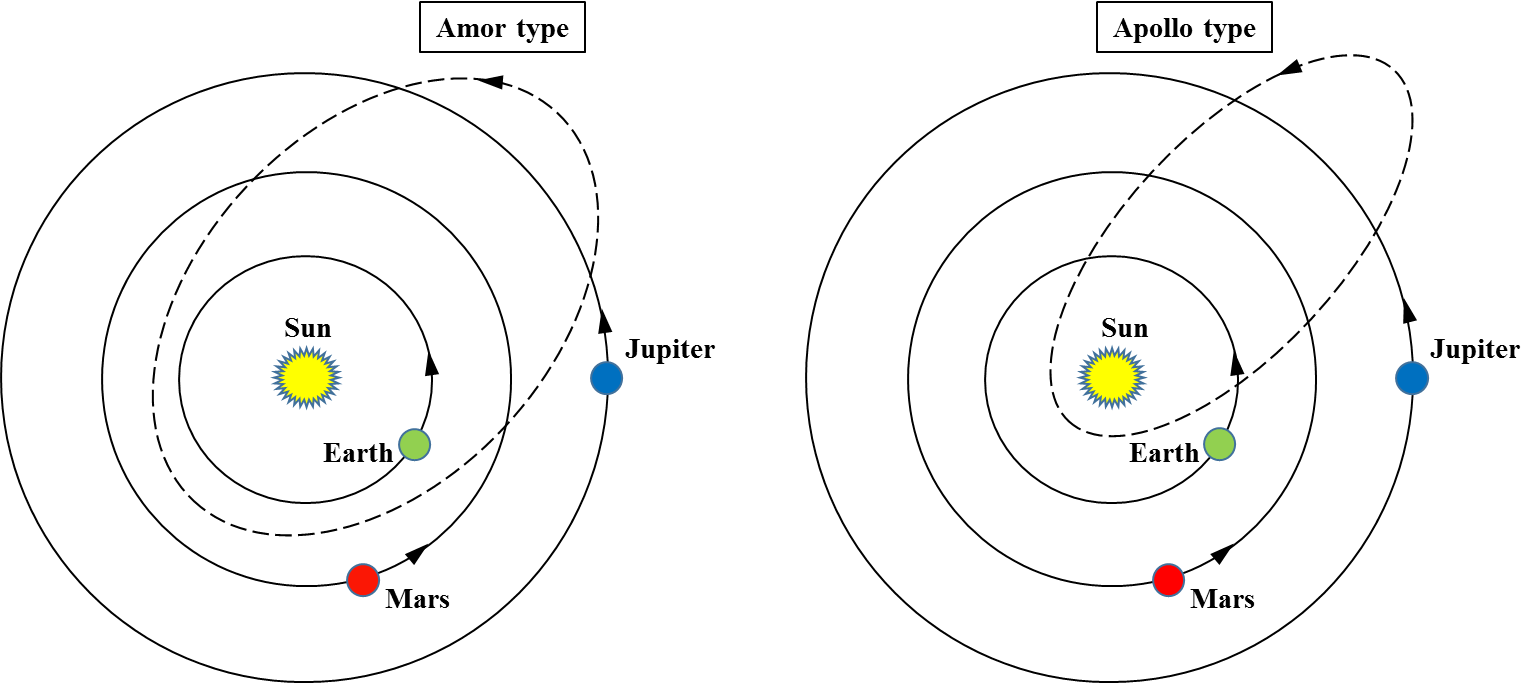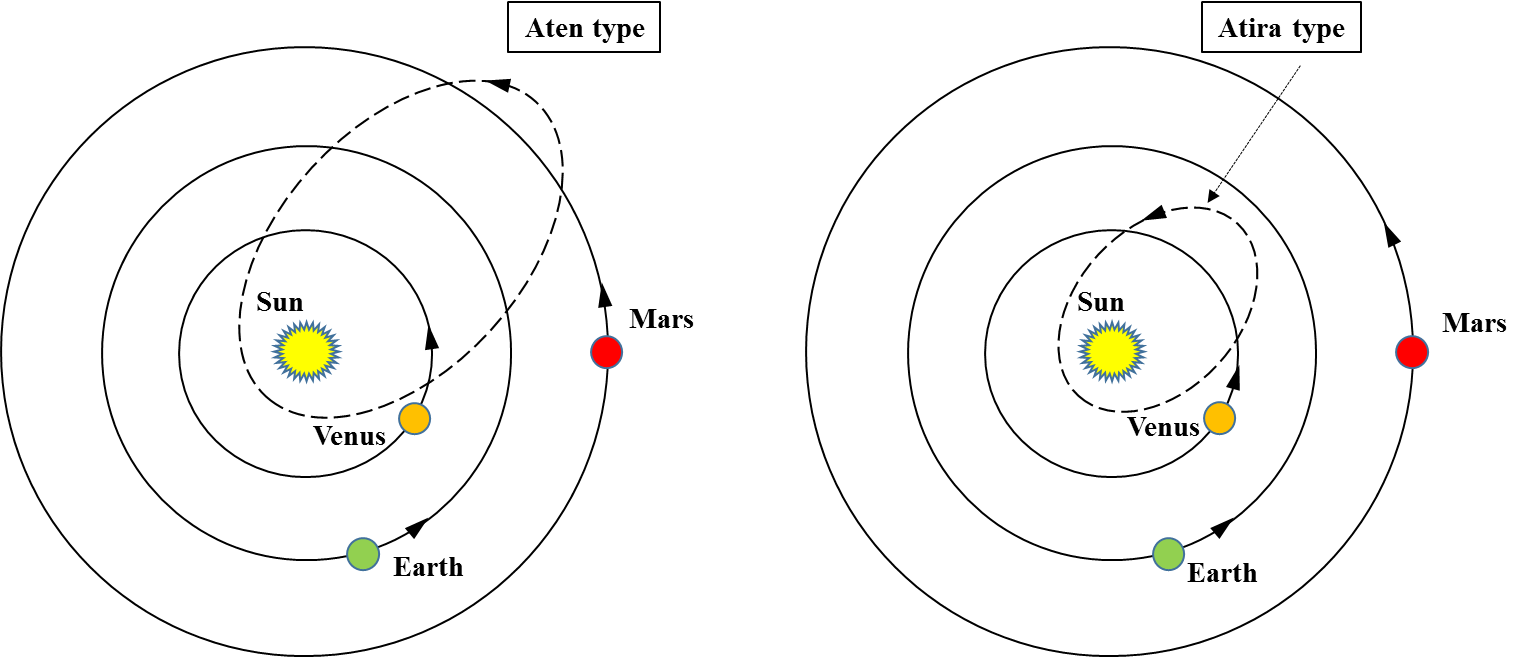Last month we looked at the Trojan asteroids. These benign and fascinating objects are likely to be relatively pristine remnants of the solar system formation. The main belt asteroids and the Trojans are no danger to humanity, they do not come close to the Earth and thus collisions will not occur,
Le mois dernier nous avons considéré un astéroïdes troyens. Ces objets fascinants sont probablement les restes de la formation du systeme Solaire. Les astéroïdes de la ceinture principale ne sont pas dangereux, c’est a dire ils ne vont pas percuter la Terre.
However, there are some asteroids on orbits which come close to, or even cross, the Earth’s orbit. These are collectively and appropriately known as Near Earth asteroids (NEAs).
Cependant il y a certains asteroïdes qui s’approchent de la Terre ou traversent son orbite. Ils s’appellent les asteroïdes geocroiseurs.
The NEAs are a subset of near Earth objects (NEOs), which also includes NECs (near Earth comets) in the general class. NEOs are defined as any astronomical body which has a perihelion distance of less than 1.3 AU.
The more menacing PHAs (Potentially hazardous asteroids) are asteroids which come within 0.05AU of the Earth. These are a risk to humanity if a large PHA were to impact with the Earth. We consider PHAs in much more detail in futures blogs, but will add here that, to date, no currently known PHA is on an orbit which will hit the Earth before the year 2880. Orbits do change though so we must keep up our guard.
Within the NEAs there are four distinct classes of asteroid, defined by their orbital characteristics, and specifically based on semi-major axis and either perihelion or aphelion distance. The classes of NEAs are: Amor; Apollo; Aten; and Amira.
Imaged from 200km by NEAR/Shoemaker probe on 29th Feb 2000
The first Earth orbit crossing asteroid discovered (in 1932) was 1862 Apollo. It was found in 1932 by the German astronomer Karl Reinmuth (b.1892 d.1979) from Heidelberg. This class of NEAs are usually on high eccentric orbits, and all have semi-major axes of more than 1 AU. Apollo is on the Minor Planet Centre’s (MPC) list of PHAs, and will come as close as 5.28 million km on 13th Nov 2046. To put this distance in context, it’s 14 times further away than the Moon is from the Earth. It will make an even closer approach to Venus on the 17th May 2075 when it will come within 1.24 million km of that planet.
Concluding our brief history of NEA discoveries are the Atira class of objects. These asteroids have orbits wholly within the orbit of the Earth, i.e. they have aphelion distances less than the perihelion distance of the Earth. The first of this rare class of object to be discovered was the namesake of the class, 163693 Atira (2003 CP20), detected on 11th February by the Lincoln laboratory NEA research team operating at Socorro, New Mexico. To date, just 20 asteroids of this class have been detected, the most recent in June 2019.
Next month’s blogs will look at the enigmatic ‘Centaurs’. Remarkable objects, these could be described as the true nomads of the solar system!
Our introductory level book on the asteroids, available through our web site here or amazon, provides many more details on the topics highlighted within our blog series.
Notre livre d’introduction sur les astéroïdes, disponible sur notre site web ici ou sur amazon donne plus de détails sur les sujets de notre série de blogs.




